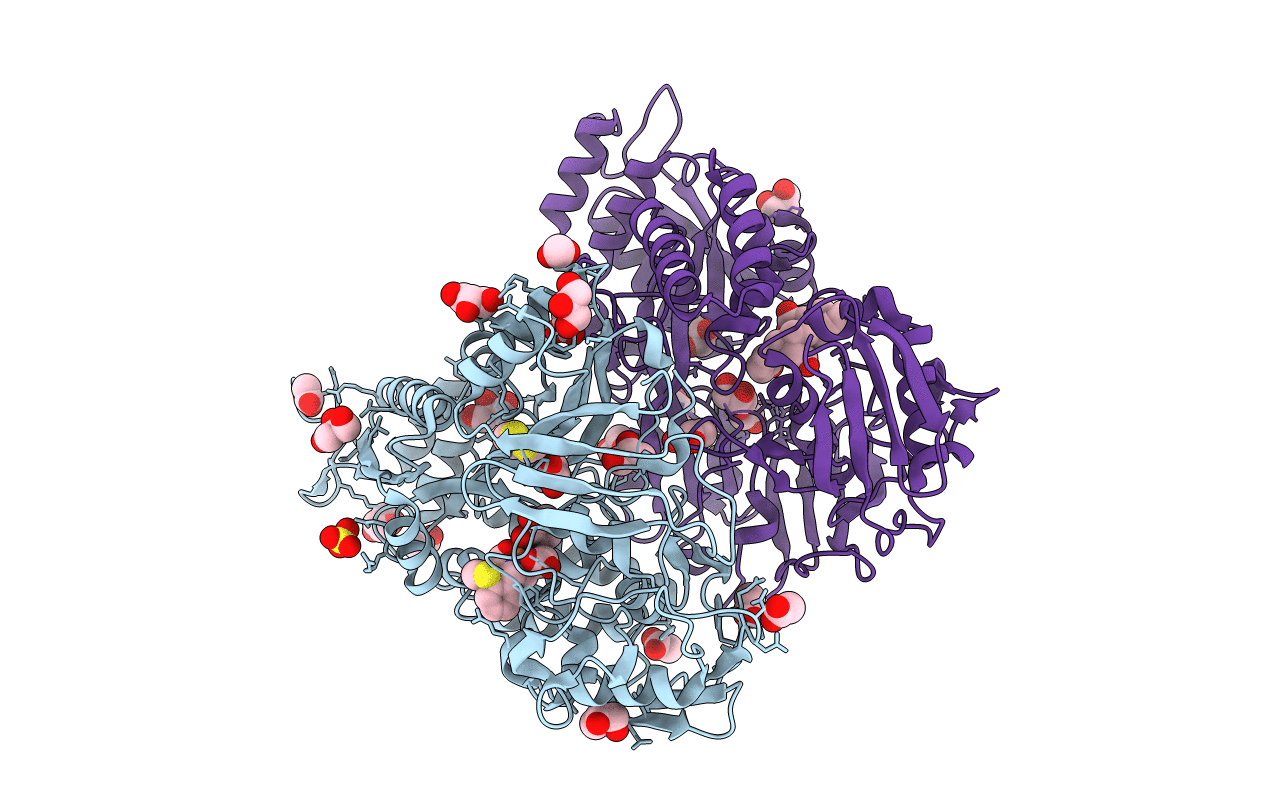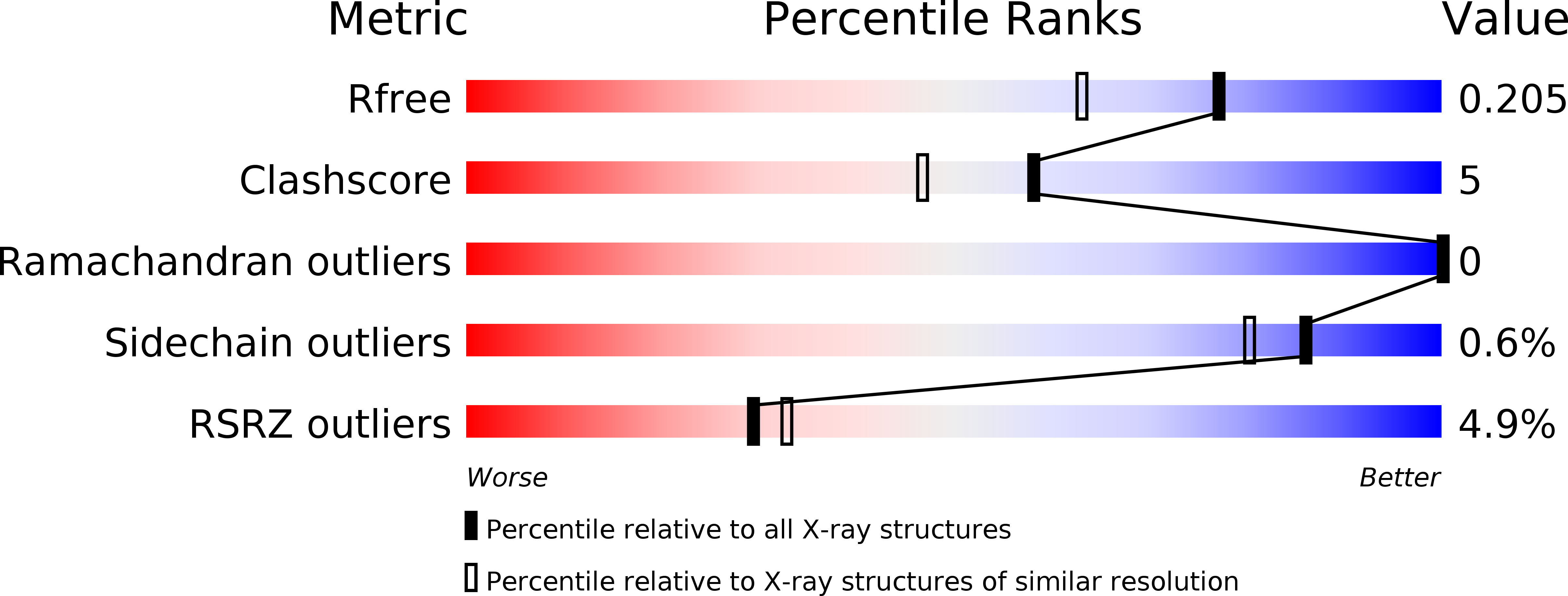
Deposition Date
2017-08-02
Release Date
2017-12-13
Last Version Date
2024-01-17
Entry Detail
PDB ID:
5ON1
Keywords:
Title:
Crystal structure of NikA in complex with hydroxylated Fe-L1 (N-(2-hydroxybenzyl)-N'-(2-thiomethylbenzyl)-N,N'-ethylenediamine diacetic acid)
Biological Source:
Source Organism:
Escherichia coli (strain K12) (Taxon ID: 83333)
Host Organism:
Method Details:
Experimental Method:
Resolution:
1.70 Å
R-Value Free:
0.20
R-Value Work:
0.17
R-Value Observed:
0.17
Space Group:
P 21 21 21


